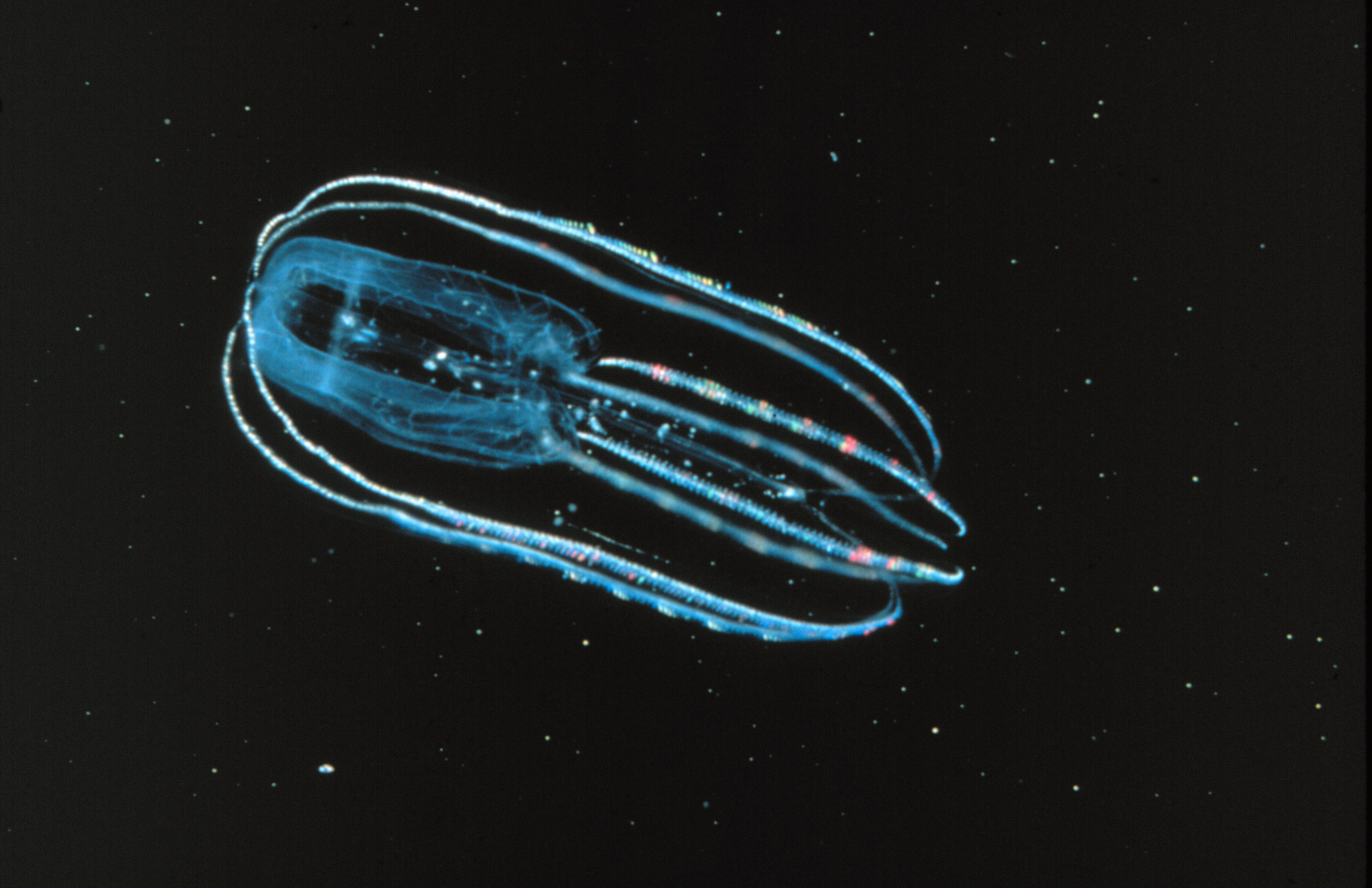Lobata on:
[Wikipedia]
[Google]
[Amazon]
 Lobata is an order of transparent marine invertebrates belonging to the phylum of
Lobata is an order of transparent marine invertebrates belonging to the phylum of
 Lobata is an order of transparent marine invertebrates belonging to the phylum of
Lobata is an order of transparent marine invertebrates belonging to the phylum of Ctenophora
Ctenophora (; : ctenophore ) is a phylum of marine invertebrates, commonly known as comb jellies, that inhabit sea waters worldwide. They are notable for the groups of cilia they use for swimming (commonly referred to as "combs"), and they are ...
in the class Tentaculata
Tentaculata is a class of comb jellies, one of two classes in the phylum Ctenophora. The common feature of this class is a pair of long, feathery, contractile tentacles, which can be retracted into specialised ciliated sheaths. In some species, ...
, and are commonly referred to as comb jellies or sea gooseberries. There are currently 19 extant known species in the order of Lobata. Members of Lobata exhibit a compressed body in the vertical plane and a pair of oral lobes. They are known to inhabit marine pelagic surfaces and the marine shores.
Anatomy
The lobates have a pair of lobes, which are muscular, cuplike extensions of the body that project beyond the mouth. Their inconspicuous tentacles originate from the corners of the mouth, running in convoluted grooves and spreading out over the inner surface of the lobes (rather than trailing far behind, as in theCydippida
Cydippida is an order of comb jellies. They are distinguished from other comb jellies by their spherical or oval bodies, and the fact their tentacles are branched, and can be retracted into pouches on either side of the pharynx. The order is not ...
). Between the lobes on either side of the mouth, many species of lobates have four auricles, gelatinous projections edged with cilia that produce water currents that help direct microscopic prey toward the mouth. This combination of structures enables lobates to feed continuously on suspended plankton
Plankton are the diverse collection of organisms that drift in Hydrosphere, water (or atmosphere, air) but are unable to actively propel themselves against ocean current, currents (or wind). The individual organisms constituting plankton are ca ...
ic prey.
Lobates have eight comb-rows, originating at the aboral pole and usually not extending beyond the body to the lobes; in species with (four) auricles, the cilia edging the auricles are extensions of cilia in four of the comb rows. Most lobates are quite passive when moving through the water, using the cilia on their comb rows for propulsion, although ''Leucothea'' has long and active auricles whose movements also contribute to propulsion. Members of the lobate genera
Genus (; : genera ) is a taxonomic rank above species and below family as used in the biological classification of living and fossil organisms as well as viruses. In binomial nomenclature, the genus name forms the first part of the binomial s ...
'' Bathocyroe'' and '' Ocyropsis'' can escape from danger by clapping their lobes, so that the jet of expelled water drives them backwards very quickly.
Unlike cydippids, the movements of lobates' combs are coordinated by nerves rather than by water disturbances created by the cilia, and combs on the same row beat together rather than in Mexican wave
The wave (also Mexican wave outside North America) is a type of metachronal rhythm achieved in a packed stadium or other large seated venue, when successive groups of spectators briefly stand and raise their arms. Immediately upon stretching to ...
style. This may have enabled lobates to grow larger than cydippids and to have shapes that are less egg-like.
Reproduction
Most members of Lobata exhibit hermaphroditism, where the individual carries both male and female sexual organs. Each comb jelly will release roughly 8,000 eggs during spawning, which occurs during the night when the temperature reaches between . Thirteen days after spawning, young Comb jellies will have grown to a size in which they can release eggs and sperm daily.Feeding
Members of Lobata are carnivores and are major predators of planktonic organisms such as copepods and fish larvae. By continuously pumping water into its body cavity, comb jellies are able to trap small prey on adhesive cells, known as colloblast, which are found on the tentacles and on the underside of their lobes.External links
{{Authority control Tentaculata Ctenophore orders